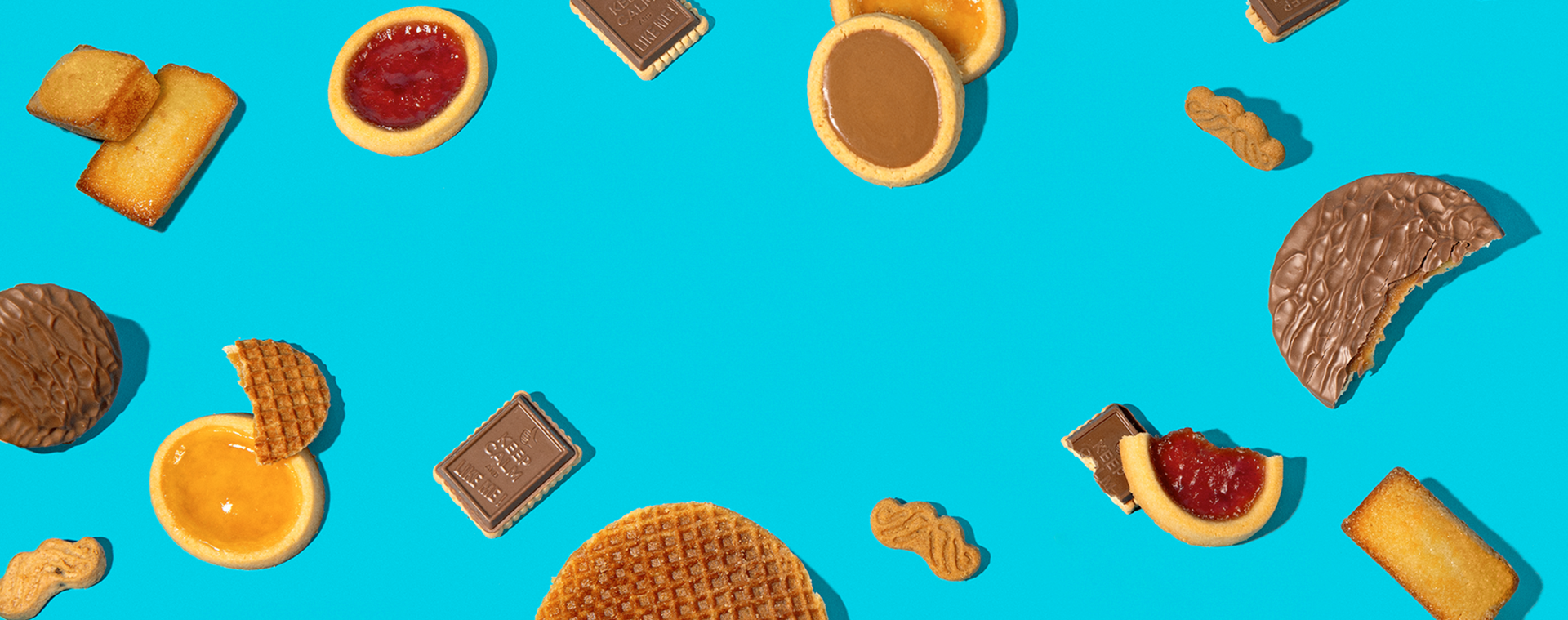The Belgian Waffle vs a Regular Waffle: Spot the Differences
We’re going to break down the basics of Belgian waffles vs regular waffles.

Oh no, your cart is empty!
This would look much better filled with treats!
When it comes to waffles, there’s a whole wide world out there. Waffles vary in shape, in texture, in size, and in thickness. There are sweet and savory waffles, Brussels waffles, toaster waffles, and…so many more. We’re going to break down the basics of Belgian waffles vs regular waffles, to give you ultimate waffle confidence as you go out and enjoy this highly delicious treat.

Belgian waffles are usually thicker than their American counterparts. These Belgian beauties are made with a recipe that includes yeasted batter and crunchy pearl sugar. Belgian waffles have extra-deep pockets—the better for filling with butter, jam, maple syrup, or whipped cream. They’re sometimes made with egg whites to give them their signature crispy-on-the-outside, fluffy-on-the-inside texture. They have a lovely golden exterior, making way to an airy inside.
Food historians trace the birth of the waffle back to ancient Greece, when two metal plates attached to a long wooden handle were used to roast flat cakes. Throughout centuries, waffles and the methods for making them changed and evolved.
Around the 15th century, Dutch wafel makers began to use the famous grid pattern that’s now intrinsic to waffles. Some say it was a way for cooks to use less batter to cover a greater surface—although we don’t know for sure, this was the start of waffles that we would recognize today, with their delicious little grooves.
A regular waffle (a typical American waffle) has a denser texture, like cake. Traditional waffles are often made with buttermilk, which gives them a richer flavor than the light-as-air Belgian variety.
American waffles are usually made with a smaller waffle iron that doesn’t make pockets as deep as the Belgian waffle maker. Because of the waffles’ thinner size, they cook faster.
Big caveat: it’s a little difficult to say too much about “regular” waffles, because there are just so many variations on the theme of waffle.

In Belgium, legend says the Prince of Liege’s chef presented the Prince with a thick waffle coated with caramelized sugar, a real hit. This was the very first Liege waffle, one of Belgium’s most popular waffle varieties. Belgium has a few different types of waffles, primarily Liege and Brussels waffles.
At the 1964 World’s Fair in Queens, New York, $1 could buy visitors a light, sweet waffle either plain, or topped with strawberries and fluffy whipped cream. Used to much heavier, denser American waffles, these Belgian delicacies fast became one of the fair’s biggest hits. People didn’t quite understand the distinction of Brussels Waffles, so they rebranded them Belgian waffles. Americans never looked back, and their love for all things Belgian waffle has grown and grown.
Want to learn more? Read our delicious story about what makes a waffle Belgian.
Sure! Since regular waffles are denser than Belgian ones, increase the leavening agent—usually baking powder—in your recipe to adjust the texture. If the instructions call for beating the egg white separately, skip this step in order to make the finished product thicker.
If you’re not in the mood to break out the waffle maker, we have the perfect solution for you. Our individually wrapped, ready to eat waffles make a perfect easy breakfast, snack, or dessert. Our Belgian Waffles are made in the traditional style from the city of Liege in Belgium, with fluffy brioche dough and pearl sugar for the slightest bit of satisfying crunch.

Two things that are almost guaranteed to bring happiness: waffles and rainbow sprinkles. Combine them both and it’s a party. Just add a generous cloud of whipped cream and shower rainbow sprinkles atop Belgian Boys’ Belgian Waffles. Kids and adults can’t help but fall in love with these.


Another waffle fun fact: they’re perfect for making sandwiches. Prepare a satisfying, savory breakfast by using cheese, ham, and fried eggs as fillings between two Belgian waffles. Or get creative with other yummy possibilities, from bacon to avocado to mushrooms.


If you somehow don’t finish all your waffles for breakfast, here’s an awesome way to repurpose them. Cut the waffles into wedges and stick a popsicle stick into each waffle wedge. Then dip the top part of the waffle wedge into melted chocolate, and top with your favorite goodies: nuts, dried berries, peanut butter, white chocolate, and whatever else you can dream up.


Are you in a lunch rut? Pack your little one—or yourself—a waffle for lunch. Pair the waffle with cubes of your favorite cheese and fresh fruit and veggie slices for a balanced and tasty meal. You’ll be the envy of the office or the cafeteria.


